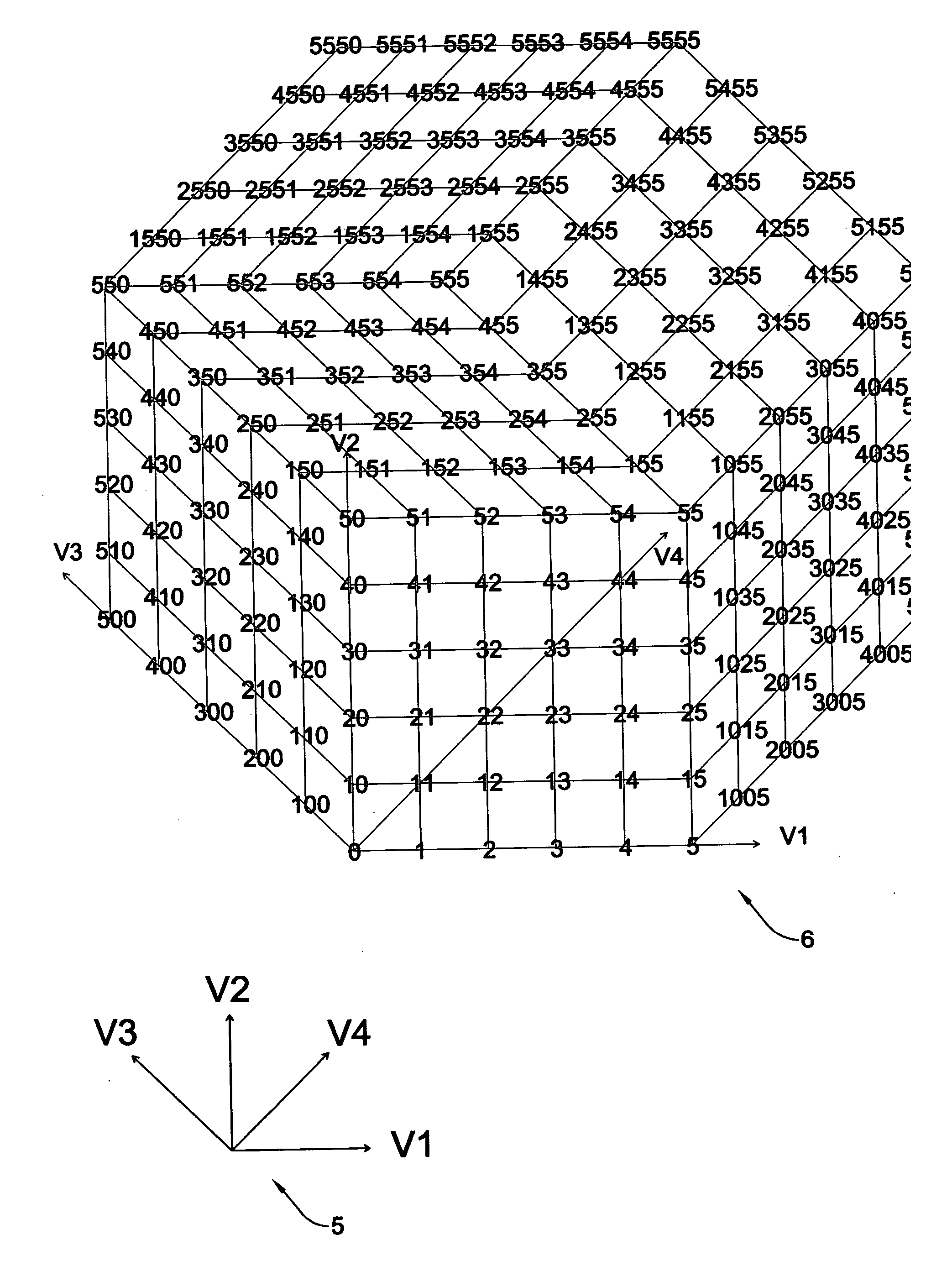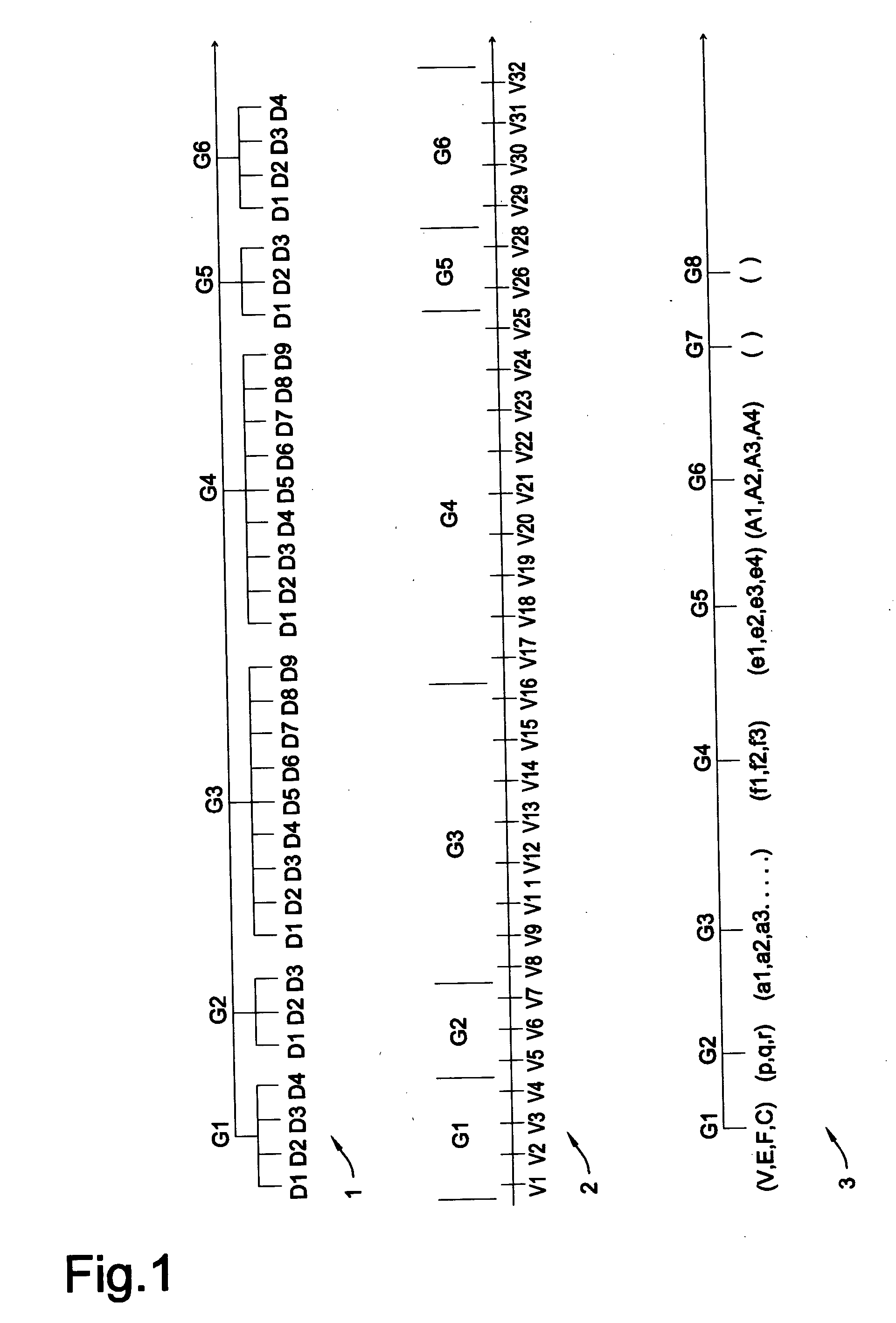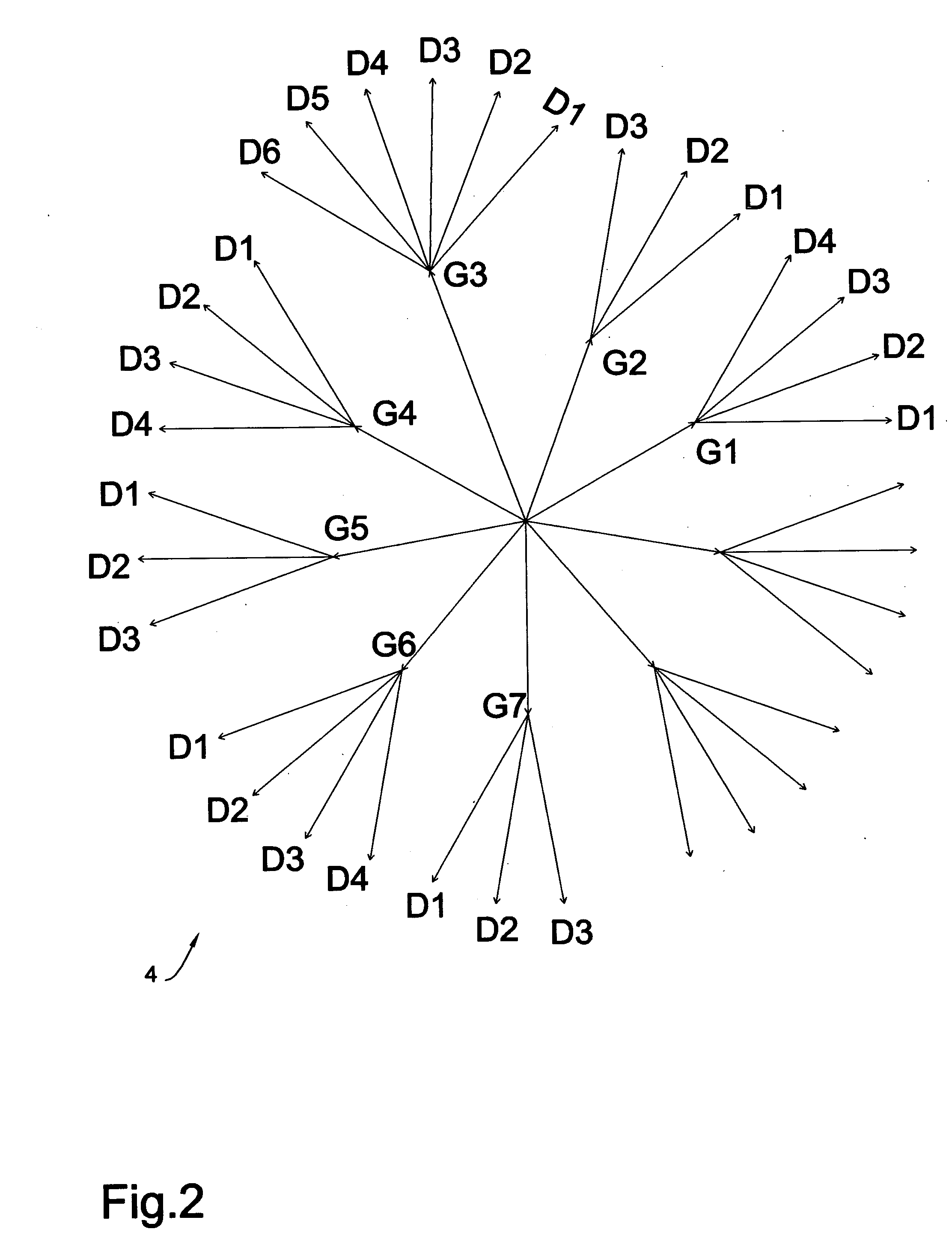Morphological genome for design applications
a technology of morphological genome and design application, applied in the field of morphological genome, can solve the problems of limited and focused efforts that miss the universal nature of form, and achieve the effect of expanding the design possibilities
- Summary
- Abstract
- Description
- Claims
- Application Information
AI Technical Summary
Benefits of technology
Problems solved by technology
Method used
Image
Examples
example 136
[0137] Example 136 shows the activation of Gene8 on the faces 109 of FIG. 24 of space-filling 112 in the same figure. This structure, with the code (4,3,4)(1,1,1,1) from Gene2 and Gene5, has four edges c1-c4, and six faces F1-F6, meeting at a representative vertex. In its curved state 136, edge c1 curves negatively into F2, edge c2 curves positively into F3, edge c3 curves negatively into F2, and edge c4 curves negatively into F5, leading to Gene8 code (−1,1,−1,−1). The generic code for this family of structures is shown in 137. It has a total of 11 co-ordinates. The morpho-space of this family is an 11-dimensional hyper-cubic space, where four of the dimensions have a frequency 3.
[0138]FIG. 28 shows a family of curved structures related to 136 in FIG. 27. 138 is a packing of curved polyhedra and prisms meeting at a typical vertex of a space-filling structure (4,3,4)(1,1,1,1) defined by Gene2 and Gene5. The rest of the structure can be visualized by repeating this condition at every...
PUM
 Login to View More
Login to View More Abstract
Description
Claims
Application Information
 Login to View More
Login to View More - R&D
- Intellectual Property
- Life Sciences
- Materials
- Tech Scout
- Unparalleled Data Quality
- Higher Quality Content
- 60% Fewer Hallucinations
Browse by: Latest US Patents, China's latest patents, Technical Efficacy Thesaurus, Application Domain, Technology Topic, Popular Technical Reports.
© 2025 PatSnap. All rights reserved.Legal|Privacy policy|Modern Slavery Act Transparency Statement|Sitemap|About US| Contact US: help@patsnap.com



